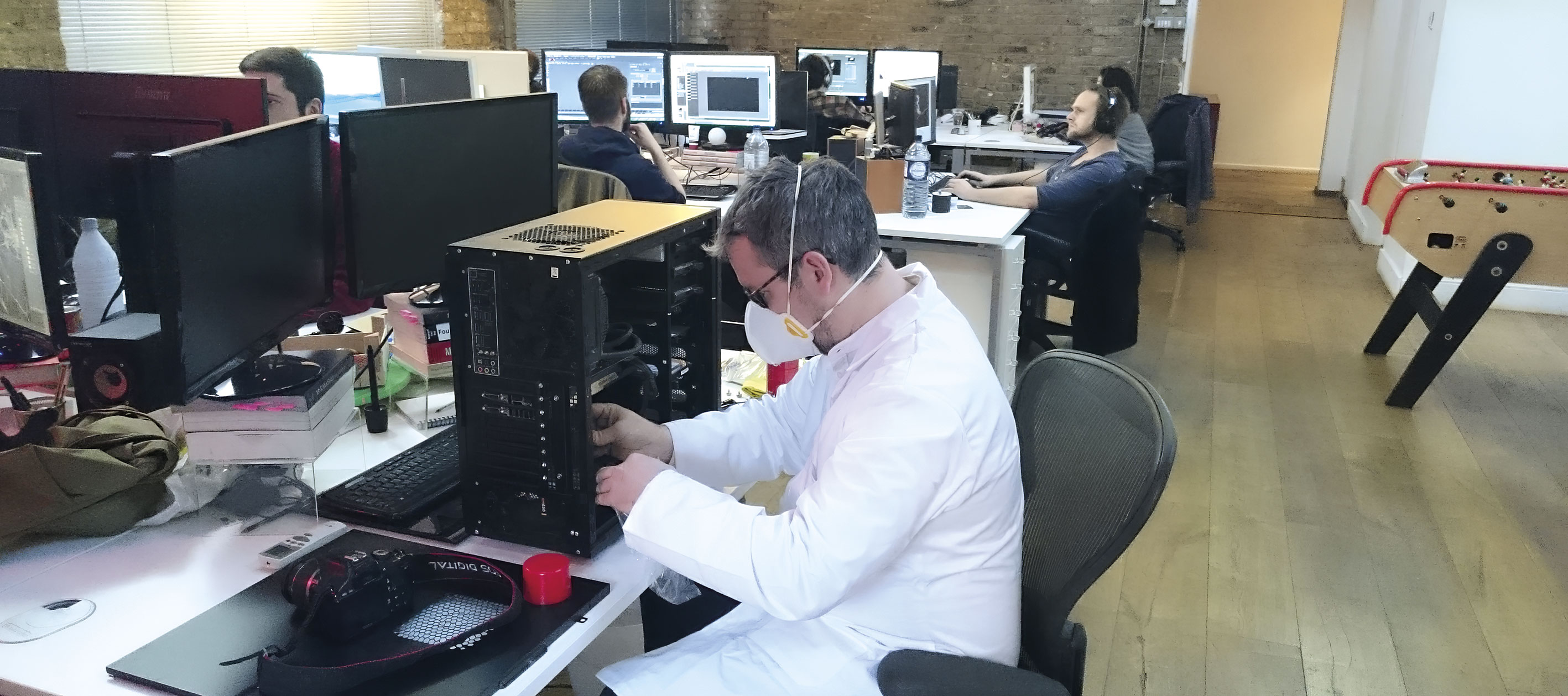ALAN WARBURTON
Dust Bunny, 2015
Dust harvested from visual effects workstations. 7cm x 7cm x 5cm.
Dust Bunny is comprised of finely milled angora-like dust harvested from the inside of ten 3D animation workstations at visual effects studio Mainframe. The volume of dust here represents an estimated 35,000 hours, or 4 years, of constant rendering and processing. The sculpture meticulously renders in this industrial by-product the Standford Bunny, the richly historic 3D test object introduced in early computer graphics experiments at Stanford University and still routinely used to demonstrate new advances in CGI.
Dust Bunny articulates a particular inversion that occurs between the real and the virtual: in the real world we seek to banish dust and dirt to optimise functionality, in CGI we labouriously reintroduce it at great cost – complex simulations, layered pseudo-random noise algorithms and intricately constructed 3D models to emulate the photographic, chaotic, infinitely dusty real world.
At the intersection of these two realities is the graphics workstation: a finely tuned monolith, vented by multiple fans spinning at up to 2000 RPM. These fans filter environmental dust into fine wads of light, delicate wool that can only be dislodged from their crevices with blasts of compressed air, soft brushes and carefully wielded tweezers.
This dust isn’t produced by the machine itself, it is biological, composed of skin, fine hair, atmospheric particles and fine cloth fibres. It is foreign and abject. In his 2011 book In the Dust of this Planet (2011), Eugene Thacker discusses how substances like oil, fog, mist, dust and dirt can be understood as forces that rupture the “world-for-us” and lets us glimpse a possible “world-without-us”. These substances – almost literally earth itself – intercede as a horror in our anthropocentric worldview.
We’re machine collaborators – we facilitate and protect the production of the virtual world-for-us, eradicating render artefacts, cleaning data sets, rotoscoping and removing noise, grain and glitch. And so it follows that must also eradicate ourselves – our very cells – from the apparatus. As much as we collaborate with the machine to eradicate dust and friction, we also collaborate with dust to introduce a kind of productive friction into the machine. (Alan Warburton)


